Children woodworking projects offer a fantastic way to ignite creativity, build essential skills, and foster a love for hands-on learning. From simple birdhouses to intricate model creations, woodworking provides a platform for kids to explore their imagination while developing fine motor skills, problem-solving abilities, and a sense of accomplishment. Whether you’re a seasoned woodworker or a curious beginner, this guide will equip you with the knowledge and inspiration to embark on a rewarding woodworking journey with your children.
This guide delves into the world of children’s woodworking, covering everything from safety basics to inspiring project ideas. We’ll explore age-appropriate tools and materials, break down the steps involved in various projects, and highlight the educational benefits of woodworking for kids. Get ready to unleash your inner craftsman and create lasting memories with your children as you embark on this exciting adventure together.
Safety First
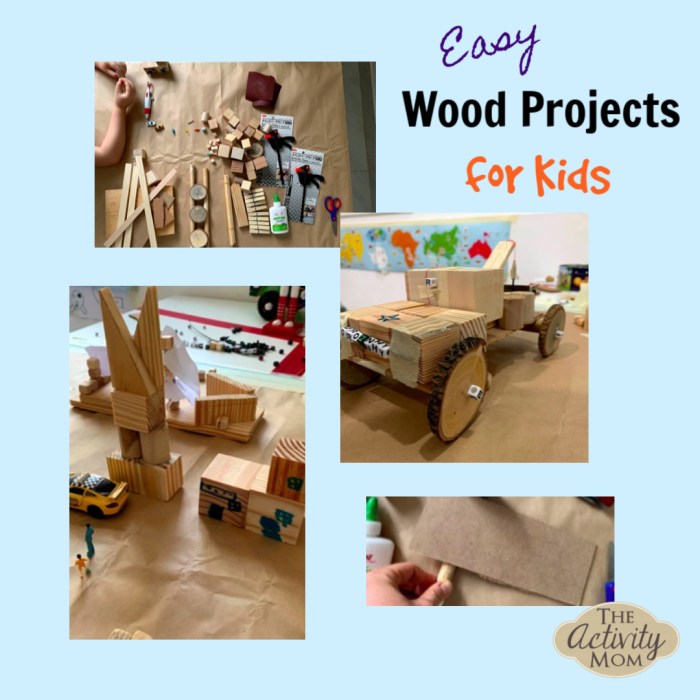
Woodworking is a fun and rewarding hobby, but it’s important to remember that safety should always come first. Working with wood and tools can be dangerous if you don’t take the proper precautions.
Safety Gear
Wearing the right safety gear is crucial for protecting yourself from potential hazards.
- Goggles: Goggles protect your eyes from flying wood chips, sawdust, and other debris. Always wear them when using power tools or hand tools that could potentially send objects flying.
- Gloves: Gloves protect your hands from splinters, cuts, and abrasions. Choose gloves that fit well and provide good dexterity.
- Hearing Protection: Power tools can be very loud, and prolonged exposure to noise can damage your hearing. Always wear earplugs or earmuffs when using power tools.
Essential Safety Rules
Following these safety rules will help you avoid accidents and injuries:
- Use Sharp Tools: Dull tools are more dangerous than sharp tools because they require more force to use, increasing the risk of slipping and injury.
- Keep Your Work Area Clean: A cluttered workspace is a recipe for accidents. Clear away any debris or tools that you are not using.
- Use the Right Tool for the Job: Don’t try to use a tool for a task it was not designed for.
- Never Work Alone: Always have someone else around in case of an accident.
- Keep Your Fingers Away from Blades: Never put your fingers near the blade of a saw or other cutting tool.
- Use a Clamp: Clamp your wood securely to your workbench before cutting or drilling.
- Be Aware of Your Surroundings: Pay attention to what you are doing and be aware of your surroundings to avoid tripping or bumping into objects.
Using Common Woodworking Tools Safely
Here are some tips for using common woodworking tools safely:
- Hammers: Hold the hammer near the end of the handle for more control. Use a soft-faced hammer for delicate work and a claw hammer for driving nails.
- Screwdrivers: Choose a screwdriver with a blade that fits the screw head. Use a screwdriver with a handle that is comfortable to grip.
- Saws: Always keep your fingers away from the saw blade. Use a push stick to guide the wood through the saw.
Beginner-Friendly Woodworking Projects: Children Woodworking Projects
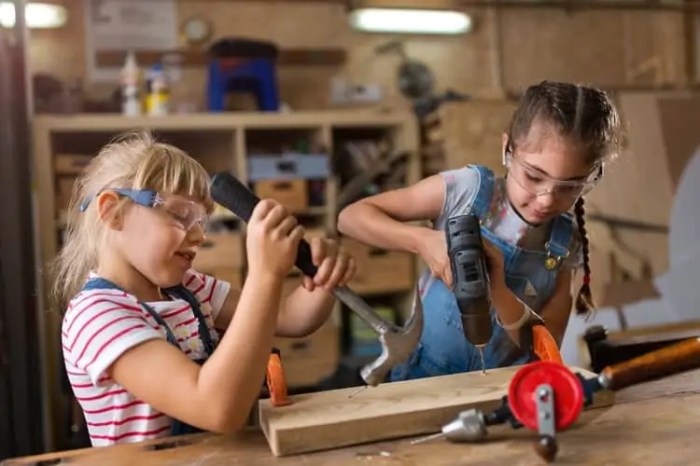
Woodworking is a great hobby for people of all ages, and it’s a fun and rewarding way to create something beautiful and useful with your own hands. If you’re a beginner, there are many simple projects you can start with that will give you a taste of the basics and help you build confidence.
Simple Woodworking Projects for Kids
This section provides a list of simple woodworking projects that are perfect for kids. These projects are designed to be easy to follow and require minimal tools and materials.
- Birdhouse: Birdhouses are a classic woodworking project that is fun and easy to make. You can find many free plans online, or you can create your own design. To make a simple birdhouse, you will need a few pieces of wood, some nails or screws, and a drill. First, cut the pieces of wood to the desired size. Then, use a drill to create holes for the entrance and ventilation. Finally, assemble the pieces of wood together using nails or screws. You can paint or stain the birdhouse to give it a unique look.
- Picture Frame: Picture frames are another simple woodworking project that is perfect for beginners. You can make a picture frame out of any type of wood, but softwoods like pine or cedar are easier to work with. To make a picture frame, you will need to cut four pieces of wood to the desired size. Then, use a miter saw or a hand saw to cut the ends of the pieces of wood at a 45-degree angle. Finally, glue the pieces of wood together to form a frame. You can then paint or stain the frame to give it a finished look.
- Small Toy Box: A small toy box is a great project for kids who want to learn how to build something more complex. You can find many free plans online for toy boxes, or you can create your own design. To make a small toy box, you will need to cut several pieces of wood to the desired size. Then, use a drill to create holes for the screws or nails. Finally, assemble the pieces of wood together using screws or nails. You can then paint or stain the toy box to give it a finished look.
Tips for Success
Here are some tips for success when working on woodworking projects:
- Start with simple projects: Don’t try to tackle too much too soon. Start with simple projects that will help you build your skills and confidence.
- Use the right tools: Using the right tools is essential for success in woodworking. Make sure you have the tools you need before you start a project.
- Measure twice, cut once: This is an old woodworking saying, but it’s important. Make sure you measure everything carefully before you cut anything.
- Take your time: Don’t rush through a project. Take your time and do things right.
- Have fun: Woodworking should be enjoyable. If you’re not having fun, you’re less likely to stick with it.
Safety First
Safety should always be your top priority when working with woodworking tools. Always wear safety glasses and ear protection when working with power tools. Use a dust mask when sanding or cutting wood. And always make sure to keep your work area clean and organized.
Tools and Materials for Kids’ Woodworking
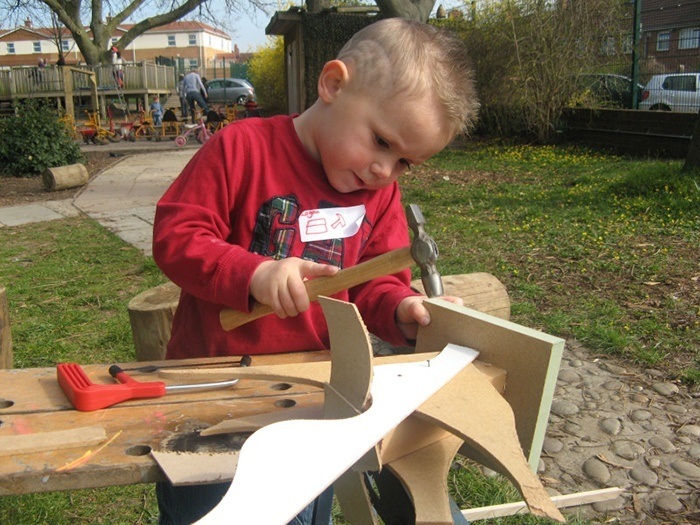
Woodworking is a fantastic hobby for kids of all ages, offering opportunities for creativity, problem-solving, and hands-on learning. When choosing tools and materials for kids, safety and ease of use are paramount. Let’s explore the best options to get your young woodworkers started.
Choosing the Right Tools
It’s important to select tools that are age-appropriate and safe for children to use. Younger children should start with basic tools, while older children can gradually progress to more advanced tools as their skills develop. Here are some examples:
- Hand Saw: A hand saw with a blunt, rounded tip and a comfortable grip is ideal for beginners. Look for saws designed specifically for kids, with shorter blades and lighter weight.
- Hammer: A small hammer with a rubber or plastic head is safer than a metal hammer. Kids should be supervised when using a hammer and taught to strike with a gentle, controlled motion.
- Screwdriver: A set of screwdrivers with different sized tips will come in handy for various projects. Choose screwdrivers with comfortable grips and sturdy construction.
- Clamps: Clamps are essential for holding wood pieces together while gluing or screwing. Look for clamps with adjustable jaws and a secure grip.
- Measuring Tape: A measuring tape is essential for accurate cutting and construction. A retractable tape measure with a clear, easy-to-read scale is ideal for kids.
- Pencil: A pencil is used for marking wood and making plans. Choose a pencil with a sharp point and a comfortable grip.
Selecting the Right Wood
Wood comes in a variety of species, each with unique properties. The type of wood you choose will depend on the project and the skill level of the child. Here’s a table outlining some popular wood types and their characteristics:
| Wood Type | Properties | Suitable Projects |
|---|---|---|
| Pine | Soft, lightweight, inexpensive | Simple projects, birdhouses, toys |
| Oak | Hard, strong, durable | Sturdy furniture, decorative items |
| Maple | Hard, strong, smooth grain | Cutting boards, furniture |
| Cherry | Hard, strong, beautiful grain | Fine furniture, decorative items |
| Walnut | Hard, strong, rich color | Fine furniture, decorative items |
Important Note: Always supervise children when they are using tools and working with wood. Teach them proper safety procedures and ensure they wear appropriate safety gear, such as safety glasses and gloves.
Inspiring Woodworking Projects for Kids
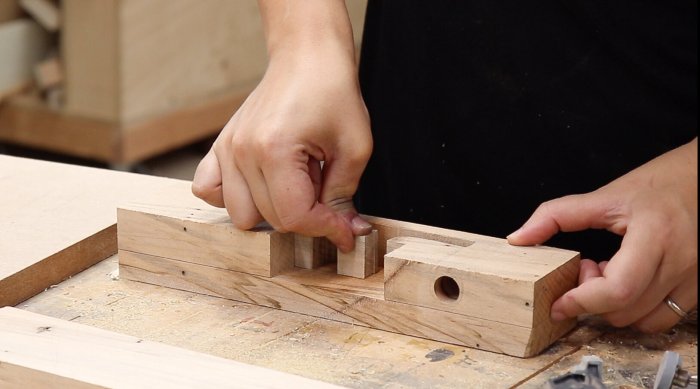
Woodworking is a fantastic hobby for children, encouraging creativity, problem-solving skills, and a sense of accomplishment. Seeing the tangible results of their hard work inspires kids to explore their imagination and develop their skills.
Examples of Woodworking Projects by Children, Children woodworking projects
Here are some inspiring examples of woodworking projects created by children:
- A young girl crafted a beautiful wooden birdhouse with intricate details, showcasing her artistic flair and meticulous attention to detail.
- A boy built a sturdy wooden toy truck, demonstrating his understanding of structural integrity and woodworking techniques.
- A group of children collaborated to create a unique wooden playset for their backyard, showcasing their teamwork and shared vision.
These projects demonstrate the diverse range of possibilities within woodworking and inspire children to explore their own creativity and build amazing things.
Resources for Finding Woodworking Project Ideas
Finding project ideas is crucial for keeping kids engaged and excited about woodworking. Here are some valuable resources:
- Online Communities: Many online communities dedicated to woodworking provide a platform for sharing project ideas, tips, and inspiration. These platforms offer a space for parents and children to connect with other woodworkers and discover new projects.
- Woodworking Blogs and Websites: Numerous blogs and websites are dedicated to woodworking, offering a wealth of project ideas, tutorials, and step-by-step instructions tailored for different skill levels.
- Woodworking Books: Woodworking books provide detailed instructions, project plans, and valuable insights into different woodworking techniques, offering a comprehensive resource for aspiring woodworkers.
Creating Personalized Gifts and Decorations
Woodworking allows kids to create unique and personalized gifts and decorations.
- Personalized Wooden Ornaments: Children can create unique ornaments for holidays or special occasions by carving, painting, or decorating wooden shapes. This allows them to express their creativity and create meaningful gifts.
- Custom Wooden Picture Frames: Kids can build wooden picture frames to showcase their artwork or family photos, adding a personal touch to their home decor.
- Wooden Toys: Children can design and build their own wooden toys, encouraging their imagination and creativity. They can create unique characters, vehicles, or games, fostering their love for woodworking.
Woodworking provides an opportunity for kids to create meaningful and personalized gifts that bring joy to others and showcase their woodworking skills.
Last Word
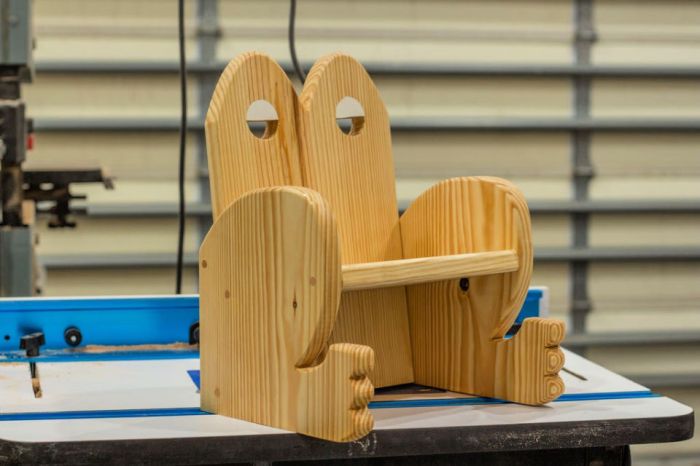
Woodworking with children is a journey of discovery, creativity, and shared experiences. By embracing safety precautions, selecting age-appropriate projects, and fostering a playful learning environment, you can unlock a world of possibilities for your kids. So, gather your tools, choose your wood, and let the fun begin! As your children embark on their woodworking adventures, remember to celebrate their achievements, encourage their curiosity, and watch as they transform their ideas into tangible creations. The joy of woodworking lies not only in the finished product but also in the process of learning, creating, and bonding together as a family.
Helpful Answers
What are some beginner-friendly woodworking projects for young children?
Simple projects like picture frames, small toy boxes, or wooden puzzles are great starting points for young children. These projects involve basic cuts and assembly, allowing kids to experience the joy of creating something tangible.
How can I ensure my child’s safety while woodworking?
Prioritize safety by providing proper supervision, using age-appropriate tools, and ensuring a designated workspace free of distractions. Teach your child basic safety rules and always emphasize the importance of wearing safety gear, such as goggles, gloves, and hearing protection.
What are some tips for engaging children in the woodworking process?
Allow children to choose the wood type, paint colors, or design elements for their projects. Involve them in the planning and decision-making process, fostering a sense of ownership and pride in their creations. Remember to celebrate their successes and encourage their creativity throughout the process.
Looking for fun and educational woodworking projects for kids? There are tons of awesome ideas out there, from simple birdhouses to intricate dollhouses. To get started, you’ll need some basic woodworking plans, and you can find plenty of free ones online, like those available at woodworking plans pdf.
Once you’ve chosen a plan, gather your materials and tools, and get ready to create something special with your kids!
